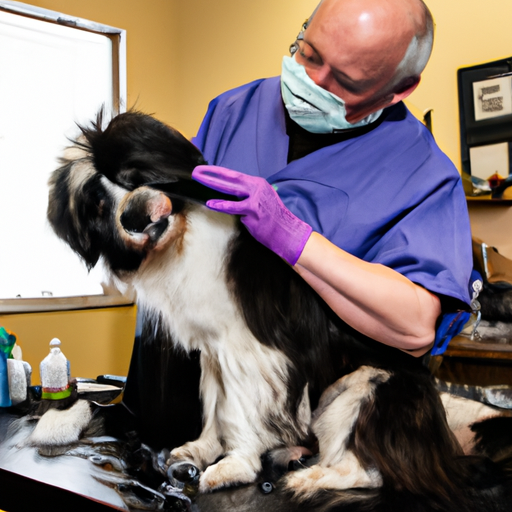Understanding Your Dog’s Anal Glands
As dog owners, it is crucial to comprehend the anatomy and function of your dog’s anal glands. These small, pea-sized sacs are located on either side of your dog’s rectal opening. Their primary role is to secrete a distinct, smelly substance that dogs use to mark their territory. However, sometimes, these glands can become blocked, leading to discomfort and potential health issues for your furry friend.
Recognizing the Signs of Anal Gland Issues
Your dog cannot tell you when it’s uncomfortable, so it’s essential to recognize the signs indicating that your dog’s anal glands may need attention. These include:
- Scooting: If your dog is dragging its bottom on the floor, it might be trying to relieve gland pressure.
- Licking or biting at the rear end: This behavior could be your dog’s attempt to address discomfort.
- Chasing their tail: This amusing dog behavior could indicate a more serious problem.
The Step-By-Step Guide to Cleaning Your Dog’s Anal Glands
Before you begin, remember that this process can be uncomfortable for your dog. Always approach with calm, reassuring energy to keep your dog at ease. Here’s how to do it:
- Preparation: Gather your supplies – gloves, warm water, a clean cloth, and canine anal gland expression solution if you have it.
- Positioning: Have your dog face away from you in a comfortable, secure position.
- Locating the Glands: Feel for the small, pea-sized glands at the 4 and 8 o’clock positions around the anal opening.
- Expressing the Glands: Gently squeeze the glands, pushing upwards towards the rectum. A small amount of fluid should be released.
- Cleaning and Comfort: Clean the area thoroughly and reward your dog for their patience.
When to See a Vet
While you certainly can express your dog’s anal glands at home, it may be best to leave this task to a professional groomer or veterinarian, especially if your dog has had previous anal gland issues. Frequent blockages, infections, or abscesses are signs that your dog should see a vet.
Frequently Asked Questions
Q: How often should anal glands be cleaned?
A: There’s no set schedule, but if your dog is showing signs of discomfort, it may be time.
Q: Can I hurt my dog by expressing their glands?
A: If done incorrectly, yes. Always use gentle pressure and stop if your dog shows signs of pain.
Q: Is it normal for the secretion to smell bad?
A: Yes, anal gland secretion has a strong, unpleasant odor.
Q: What if no fluid comes out when I squeeze?
A: The glands may be impacted or infected. Consult with a vet if you’re unable to express the glands.
Q: Can a diet change help with anal gland issues?
A: Sometimes, a high-fiber diet can help. Talk to your vet about the best diet for your dog.
Caring for a dog is not always a walk in the park, but understanding how to clean your dog’s anal glands is an essential part of pet ownership that can keep your furry friend happy and healthy.



